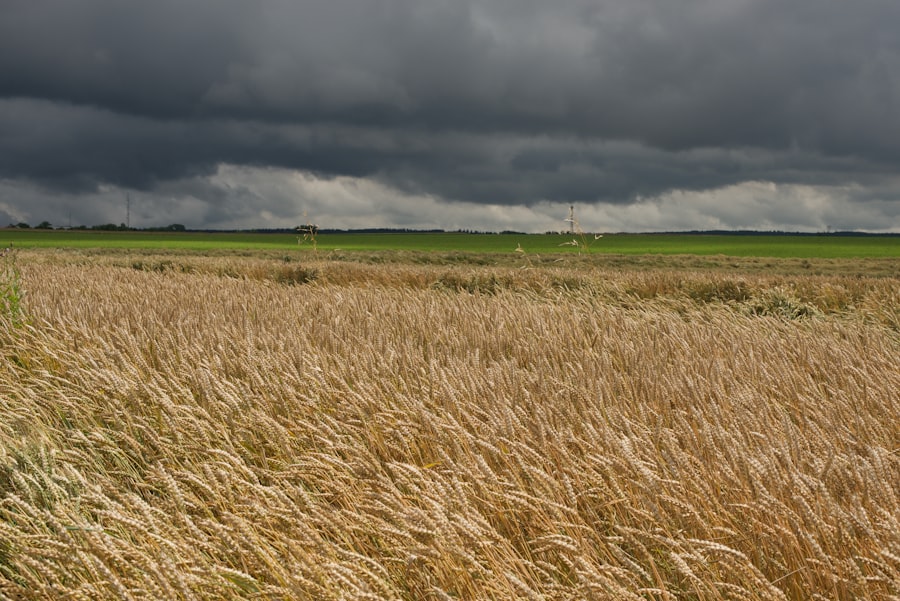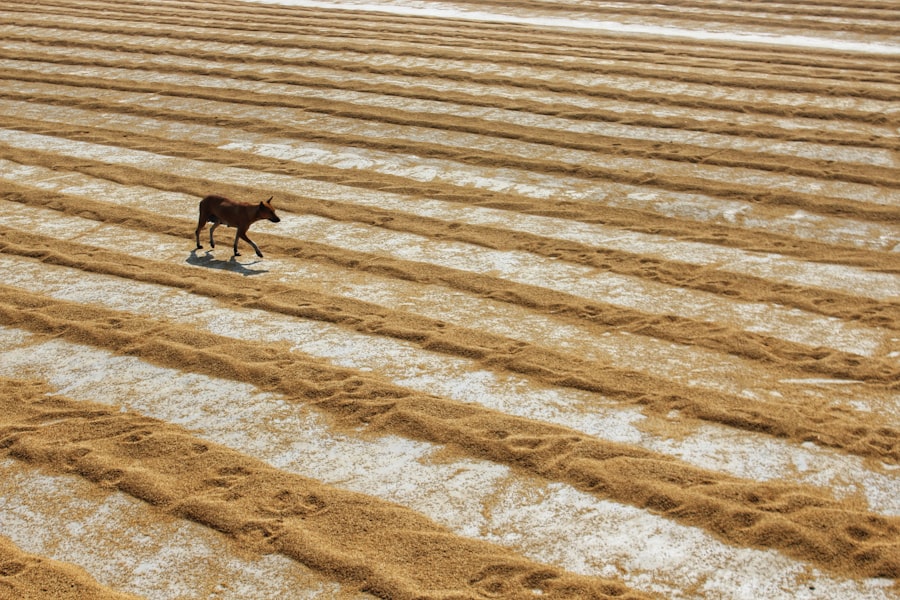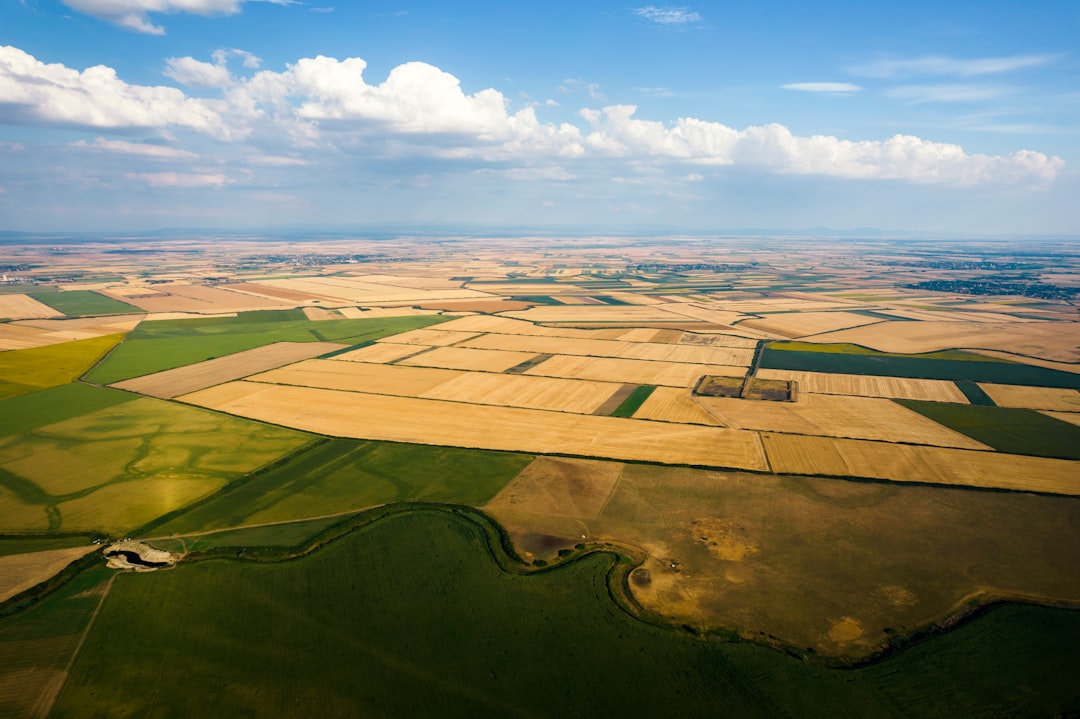The Great Plains, often referred to as the “breadbasket of America,” is a vast expanse of flat land that stretches across the central United States and parts of Canada. This region is characterized by its fertile soil, which has made it a prime location for agriculture since the 19th century. Farmers in the Great Plains cultivate a variety of crops, including wheat, corn, and soybeans, contributing significantly to the nation’s food supply.
The agricultural practices in this area have evolved over time, adapting to both technological advancements and environmental changes. However, the challenges posed by climate change are increasingly threatening the sustainability of farming in this vital region. As the backbone of American agriculture, Great Plains farming is not only crucial for local economies but also for global food security.
The region’s agricultural output supports millions of people, from farmers and their families to consumers worldwide. However, the interplay between farming practices and climate conditions is complex. Farmers must navigate a landscape that is not only shaped by their cultivation techniques but also by the broader climatic patterns that influence crop yields and soil health.
Understanding the historical and current climate trends is essential for grasping the challenges that lie ahead for Great Plains agriculture.
Key Takeaways
- Great Plains farming has a long history and plays a significant role in the agricultural industry.
- Historical climate patterns in the Great Plains have influenced farming practices and crop choices.
- Current climate change trends in the Great Plains are impacting farming conditions and crop yields.
- Climate change is affecting crop production in the Great Plains, leading to challenges for farmers.
- Drought has a significant impact on Great Plains farming, affecting crop growth and water availability.
Historical Climate Patterns in the Great Plains
Historically, the climate of the Great Plains has been marked by its variability. The region experiences a continental climate, characterized by hot summers and cold winters, with precipitation levels that can fluctuate dramatically from year to year. This variability has shaped agricultural practices over generations.
For instance, during periods of ample rainfall, farmers have thrived, producing bountiful harvests. Conversely, during drought years, crop failures have led to economic hardship and even migration away from farming communities. The Dust Bowl of the 1930s serves as a stark reminder of how extreme weather events can devastate agriculture in the Great Plains.
A combination of poor farming practices and severe drought led to widespread soil erosion and crop failure, forcing many families to abandon their farms. This historical event highlighted the importance of sustainable farming practices and the need for farmers to adapt to changing climatic conditions. As farmers learned from past mistakes, they began to implement more resilient agricultural techniques, such as crop rotation and conservation tillage, which have become integral to modern farming in the region.
Current Climate Change Trends in the Great Plains

In recent years, climate change has emerged as a significant factor influencing weather patterns across the Great Plains. Rising global temperatures have led to shifts in precipitation patterns, with some areas experiencing increased rainfall while others face prolonged dry spells. These changes pose new challenges for farmers who must adapt their practices to maintain productivity in an uncertain climate.
The frequency and intensity of extreme weather events, such as floods and droughts, have also increased, further complicating agricultural planning. Moreover, the warming climate has resulted in longer growing seasons, which can be both beneficial and detrimental. While some crops may benefit from extended periods of warmth, others may suffer from heat stress or increased pest pressures.
Farmers are now faced with the dual challenge of maximizing their yields while mitigating the risks associated with a changing climate. Understanding these current trends is crucial for developing effective strategies to ensure the resilience of Great Plains agriculture in the face of ongoing climate change.
Effects of Climate Change on Crop Production
| Climate Change Impact | Effects on Crop Production |
|---|---|
| Rising temperatures | Reduced crop yields, changes in planting and harvesting times |
| Changes in precipitation patterns | Increased droughts or floods, affecting crop growth and water availability |
| Extreme weather events | Damage to crops, loss of productivity |
| Shifts in pest and disease patterns | Increased pest infestations and disease outbreaks, impacting crop health |
| Loss of biodiversity | Reduced resilience and adaptability of crops to changing conditions |
The effects of climate change on crop production in the Great Plains are multifaceted and complex. Changes in temperature and precipitation can directly impact crop yields, with some studies indicating that rising temperatures may lead to reduced yields for staple crops like wheat and corn. Heat stress during critical growth periods can hinder pollination and grain filling, resulting in lower harvests.
Additionally, altered precipitation patterns can lead to either waterlogging or drought conditions, both of which can severely affect crop health. Furthermore, climate change is also influencing soil health and fertility. Increased rainfall can lead to soil erosion and nutrient leaching, while drought conditions can cause soil compaction and degradation.
As soil quality diminishes, farmers may find it increasingly difficult to maintain productive fields without resorting to chemical fertilizers or other inputs that can further strain their resources. The cumulative effects of these changes underscore the urgent need for farmers to adopt innovative practices that enhance resilience and sustainability in their operations.
Impact of Drought on Great Plains Farming
Drought has long been a recurring challenge for farmers in the Great Plains, but its frequency and severity are expected to increase due to climate change. Prolonged dry spells can devastate crops, leading to significant economic losses for farmers and impacting local economies reliant on agricultural production. During drought years, farmers often face difficult decisions regarding water usage and crop selection, as they strive to balance immediate needs with long-term sustainability.
The impact of drought extends beyond individual farms; it can ripple through entire communities and regions. Reduced crop yields can lead to higher food prices and increased competition for resources among farmers. Additionally, drought can strain water supplies, making it more challenging for farmers to irrigate their fields effectively.
As water becomes scarcer, conflicts over water rights may arise, further complicating the agricultural landscape in the Great Plains.
Changes in Pest and Disease Patterns

Climate change is also altering pest and disease patterns in the Great Plains, presenting new challenges for farmers. Warmer temperatures can expand the range of many pests and pathogens that threaten crops, allowing them to thrive in areas where they were previously limited by colder conditions. This shift can lead to increased infestations and outbreaks of diseases that farmers may not be prepared to manage effectively.
Moreover, changes in precipitation patterns can create favorable conditions for certain pests and diseases to proliferate. For instance, wetter conditions may promote fungal diseases that can devastate crops like wheat and soybeans. Farmers must now contend with a more dynamic pest landscape, requiring them to adopt integrated pest management strategies that are responsive to these evolving threats.
This may involve investing in new technologies or practices that enhance their ability to monitor and control pest populations effectively.
Water Scarcity and Irrigation Challenges
Water scarcity is becoming an increasingly pressing issue for farmers in the Great Plains as climate change exacerbates existing challenges related to water availability. Many regions within the Great Plains rely heavily on groundwater sources for irrigation; however, over-extraction has led to declining water tables and concerns about long-term sustainability. As drought conditions become more frequent, farmers may find it increasingly difficult to secure adequate water supplies for their crops.
Irrigation challenges are further compounded by regulatory frameworks that govern water usage. In some areas, water rights are tightly controlled, limiting farmers’ ability to access necessary resources during critical growing periods. As competition for water intensifies among agricultural users and urban populations alike, farmers must navigate complex legal landscapes while seeking innovative solutions to optimize their irrigation practices.
This may involve adopting more efficient irrigation technologies or exploring alternative water sources such as rainwater harvesting.
Adaptation Strategies for Great Plains Farmers
In response to the myriad challenges posed by climate change, many farmers in the Great Plains are actively seeking adaptation strategies that enhance their resilience. These strategies encompass a range of practices aimed at improving soil health, optimizing water usage, and diversifying crop production. For instance, cover cropping has gained popularity as a means of enhancing soil fertility while reducing erosion risks during extreme weather events.
Additionally, farmers are increasingly turning to precision agriculture technologies that allow them to monitor field conditions more closely and make data-driven decisions about resource allocation. By utilizing tools such as soil moisture sensors and satellite imagery, farmers can optimize irrigation schedules and apply fertilizers more efficiently, ultimately improving crop yields while minimizing environmental impacts. Collaborative efforts among farmers, researchers, and agricultural organizations are also fostering knowledge-sharing initiatives that empower producers to adopt best practices tailored to their specific circumstances.
Economic Impacts of Climate Change on Great Plains Farming
The economic implications of climate change on Great Plains farming are profound and far-reaching. As weather patterns become more unpredictable, farmers face increased financial risks associated with crop failures and reduced yields. The volatility of commodity prices further complicates matters; when adverse weather events occur, prices may spike due to supply shortages, but this does not necessarily translate into profitability for farmers who have already incurred losses.
Moreover, the costs associated with implementing adaptation strategies can be significant. Farmers may need to invest in new technologies or infrastructure improvements to enhance their resilience against climate-related challenges. While these investments may yield long-term benefits, they can strain short-term cash flow and financial stability for many producers.
As such, understanding the economic landscape shaped by climate change is essential for developing policies that support sustainable agricultural practices while ensuring the viability of farming operations in the Great Plains.
Policy and Government Response to Climate Change in Agriculture
Recognizing the urgent need for action in response to climate change impacts on agriculture, policymakers at various levels are beginning to implement measures aimed at supporting farmers in the Great Plains. Federal programs such as crop insurance initiatives provide a safety net for producers facing adverse weather events while encouraging sustainable practices through conservation programs. State-level initiatives also play a crucial role in addressing climate-related challenges faced by farmers.
Many states are investing in research programs focused on developing climate-resilient crops or promoting water conservation techniques among agricultural producers. Additionally, collaboration between government agencies and agricultural organizations fosters knowledge-sharing opportunities that empower farmers with information about best practices for adapting to changing conditions.
Future Outlook for Great Plains Farming in a Changing Climate
The future outlook for Great Plains farming amid ongoing climate change is one of both challenge and opportunity. While farmers will undoubtedly face increasing pressures from shifting weather patterns and resource constraints, there is also potential for innovation and adaptation that could reshape agricultural practices in positive ways. Embracing sustainable farming techniques will be essential for ensuring long-term viability while minimizing environmental impacts.
As research continues to advance our understanding of climate dynamics and agricultural resilience, farmers who remain proactive in adopting new technologies and practices will be better positioned to navigate an uncertain future. Ultimately, fostering collaboration among stakeholders—farmers, researchers, policymakers—will be key to developing comprehensive strategies that support sustainable agriculture in the Great Plains while addressing the pressing challenges posed by climate change.
The Great Plains region is experiencing significant changes due to climate change, which is impacting farming practices and crop yields. As temperatures rise and precipitation patterns shift, farmers are facing challenges in maintaining productivity and sustainability. An insightful article discussing these impacts can be found on MyGeoQuest, which delves into the specific ways climate change is altering agricultural practices in the Great Plains. For more detailed information, you can read the full article by visiting mygeoquest.
com/sample-page/’>this link. This resource provides valuable insights into how farmers are adapting to these changes and the strategies being implemented to mitigate the effects of climate change on agriculture in the region.
WATCH NOW! Why America’s Heartland Is Disappearing Fast
FAQs
What is the Great Plains climate change impact on farming?
The Great Plains region is experiencing climate change impacts such as increased temperatures, changes in precipitation patterns, and more frequent extreme weather events, which can have significant effects on farming practices and crop yields.
How does climate change affect crop production in the Great Plains?
Climate change can lead to shifts in growing seasons, increased water stress, and changes in pest and disease patterns, all of which can impact crop production in the Great Plains. Farmers may need to adapt their planting schedules and crop choices to mitigate these effects.
What are the potential economic impacts of climate change on farming in the Great Plains?
Climate change can lead to increased production costs, reduced crop yields, and potential crop failures, which can have significant economic impacts on farming in the Great Plains. This can affect both individual farmers and the overall agricultural industry in the region.
How can farmers in the Great Plains adapt to climate change?
Farmers in the Great Plains can adapt to climate change by implementing practices such as conservation tillage, crop diversification, and water management strategies to mitigate the impacts of changing climate conditions on their farming operations.
What are some potential solutions to mitigate the impact of climate change on farming in the Great Plains?
Potential solutions to mitigate the impact of climate change on farming in the Great Plains include investing in sustainable agricultural practices, improving soil health, and developing drought-resistant crop varieties to adapt to changing climate conditions. Additionally, supporting policies and incentives for climate-smart agriculture can help farmers mitigate the impacts of climate change.
